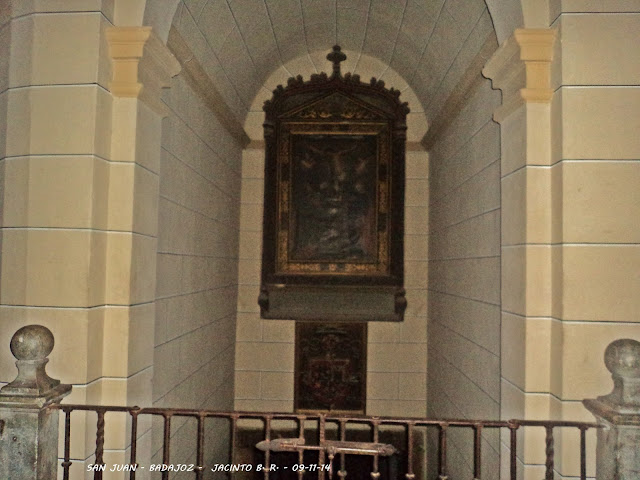 |
La S.I. Catedral de Badajoz (o Catedral de San Juan Bautista), que posee rango metropolitano, está situada en la Plaza de España, en el centro de Badajoz (España). Es la sede de los arzobispos extremeños, formando la archidiócesis Mérida-Badajoz.2 A su vez es, junto con las catedrales de Coria y Plasencia, socia fundadora de la asociación Ciudades Catedralicias, a la que pertenecen otras quince catedrales españolas
Tras la conquista cristiana de la ciudad en 1230 por el rey Alfonso IX de León, fue nombrado obispo Fray Pedro Pérez. Durante el inicio de su obispado se utilizó la antigua mezquita como catedral de la ciudad con la advocación de Santa María del Castillo. Dos años después de la finalización de la conquista se planteó la necesidad de construir una catedral y no fue hasta mediados del siglo XIII cuando se iniciaron las obras. Se eligió como emplazamiento el lugar que ocupaba una antigua iglesia visigoda o mozárabe situada en el Campo de San Juan, terreno situado en el exterior de la alcazaba.
En 1276 la catedral fue consagrada bajo la advocación de san Juan Bautista, pese a que las obras no habían concluido aún. La construcción de los aspectos fundamentales del edificio se prolongó hasta el siglo XV, realizándose durante los siglos XVI y XVII sucesivas reformas y añadidos que han otorgado a la catedral su aspecto actual, no quedando completamente terminada hasta el siglo XVIII.
En este templo tuvieron lugar los desposorios del entonces Príncipe de Asturias y futuro rey don Fernando VI con la infanta portuguesa doña Bárbara de Braganza en 1729, que fue reina de España hasta su muerte en 1758.
Fue declarada Monumento Histórico-Artístico el 3 de junio de 1931
|
Una recopilación de mis recorridos por Extremadura, sierra de Aracena, Picos de Aroche y raya de Portugal.
Archivo del blog
jueves, 19 de noviembre de 2015
BADAJOZ, PARROQUIA DE SAN JUAN , CATEDRAL. / PARISH OF SAN JUAN , Badajoz Cathedral / PARISH von San Juan, Badajoz Cathedral / PAROISSE DE SAN JUAN , Badajoz Cathedral
Suscribirse a:
Enviar comentarios (Atom)






























No hay comentarios:
Publicar un comentario